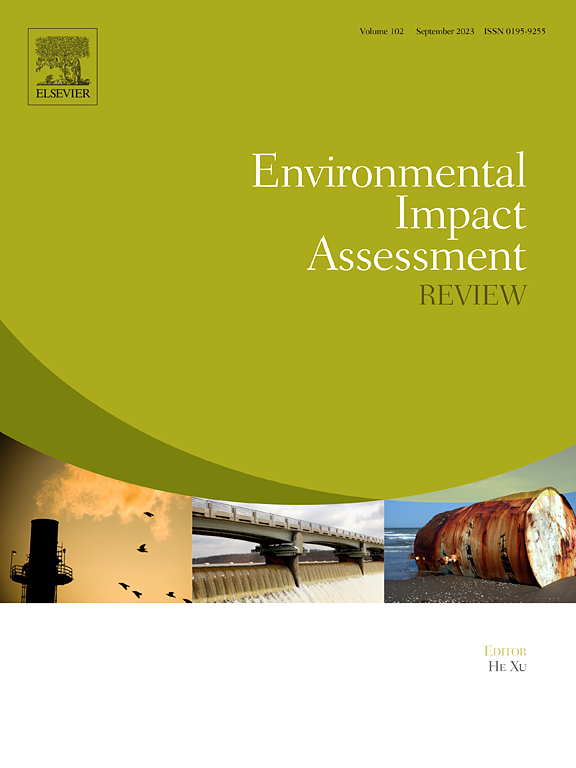基于系统动力学的固体废物资源化利用实现污染与碳减排协同效益的路径选择
IF 9.8
1区 社会学
Q1 ENVIRONMENTAL STUDIES
引用次数: 0
摘要
随着碳峰值和中和目标的推进,以及“零废物城市”的发展,固体废物的资源化利用因其减少污染物和温室气体排放的双重影响而受到广泛关注。然而,在固体废物领域的协同评价研究还很有限。本研究旨在发展一种定量方法来评价固体废物利用的协同程度,并为选择全面有效的发展途径提供建议。建立了包含8类影响因素的系统动力学模型,对2024 - 2050年中国经济协同指数进行了预测。研究结果表明,中国固体废物资源化利用在污染减排和碳减排方面均产生显著的协同效益,对污染物减排的影响大于对温室气体减排的影响。技术教育水平、城市化水平、经济发展水平和资源利用水平对污染与碳减排的协同效应具有至关重要的影响。短期内适度减缓城镇化进程,加快科技教育发展,优化产业结构,可以增强固废资源化利用的碳减排效益。本研究不仅为量化全国范围内固体废物资源化利用对污染与碳减排的协同程度提供了方法论参考,而且描绘了各影响因素与协同效应之间的动态格局,为选择发展路径提供了依据。本文章由计算机程序翻译,如有差异,请以英文原文为准。
Pathway selection to achieving synergistic benefits of pollution and carbon reduction through solid waste resource utilization based on system dynamics
As carbon peaking and neutrality goals advance, along with the development of “Zero-Waste City,” the resource utilization of solid waste has garnered considerable attention for its dual impact on reducing pollutant and greenhouse gas (GHG) emissions. However, there is limited research on synergistic evaluation in the field of solid waste. This research seeks to develop a quantitative approach for evaluating the synergistic degree of solid waste utilization and offers recommendations for selecting comprehensive and effective development pathways. A system dynamics (SD) model encompassing eight categories of influencing factors was developed to predict the synergy index (SI) for China from 2024 to 2050. The results indicate that China's solid waste resource utilization will yield significant co-benefits in both pollution and carbon reduction, with a greater impact on pollutant reduction than on GHG mitigation. The level of technology and education, urbanization, economic development, and resource utilization have a crucial impact on the synergy between pollution and carbon reduction. Moderately slowing the urbanization process in the short term, accelerating technological and educational development, and optimizing industrial structure can enhance the carbon emission reduction benefits of solid waste resource utilization. This study not only provides a methodological reference for quantifying the synergistic degree of pollution and carbon reduction through solid waste resource utilization at a national scale, but also delineates the dynamic patterns between various influencing factors and synergy, offering a foundation for selecting development pathways.
求助全文
通过发布文献求助,成功后即可免费获取论文全文。
去求助
来源期刊

Environmental Impact Assessment Review
ENVIRONMENTAL STUDIES-
CiteScore
12.60
自引率
10.10%
发文量
200
审稿时长
33 days
期刊介绍:
Environmental Impact Assessment Review is an interdisciplinary journal that serves a global audience of practitioners, policymakers, and academics involved in assessing the environmental impact of policies, projects, processes, and products. The journal focuses on innovative theory and practice in environmental impact assessment (EIA). Papers are expected to present innovative ideas, be topical, and coherent. The journal emphasizes concepts, methods, techniques, approaches, and systems related to EIA theory and practice.
 求助内容:
求助内容: 应助结果提醒方式:
应助结果提醒方式:


